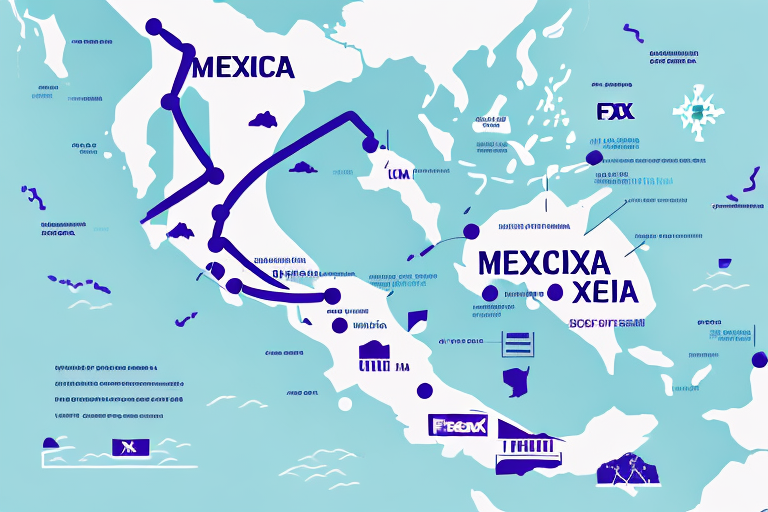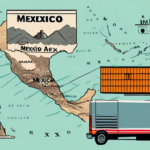Understanding FedEx International Shipping Rates from Korea to Mexico
If you need to ship items from Korea to Mexico, FedEx stands out as a reliable and efficient choice for international shipping. Before making a decision, it's crucial to understand the factors influencing FedEx's international shipping rates between these two countries, how to calculate these rates, and strategies to minimize your shipping costs.
Why FedEx is a Preferred Choice for International Shipping from Korea to Mexico
FedEx is renowned for its fast and dependable delivery services, making it a preferred option for international shipments. The company boasts an extensive global network, including numerous locations in both Korea and Mexico, providing local expertise and resources to ensure seamless shipments.
Another key advantage of choosing FedEx is its advanced tracking system. With real-time tracking capabilities, you can monitor your shipment from departure in Korea to arrival in Mexico, keeping you informed about its status at every stage. Additionally, FedEx offers a variety of shipping options, such as express and economy services, allowing you to select the option that best aligns with your needs and budget.
According to the FedEx International Services Overview, their global network spans over 220 countries and territories, ensuring comprehensive coverage and support for your shipping needs.
The Factors that Affect FedEx Shipping Rates for Korea to Mexico Shipments
Several factors determine the cost of FedEx international shipping from Korea to Mexico:
- Package Weight and Dimensions: Heavier and larger packages incur higher shipping costs.
- Destination Address: Remote or less accessible areas may result in increased rates.
- Service Level: Choosing between express or economy services affects pricing.
- Additional Features: Services like insurance, customs clearance assistance, and special handling can add to the cost.
- Type of Goods: Shipping hazardous materials, perishable items, or high-value goods requires special handling, impacting the rate.
The FedEx shipping rates also vary based on the nature and value of the goods, as higher-value shipments may necessitate additional security measures or insurance coverage.
Data from the FedEx Annual Report 2023 indicates that international shipping accounts for approximately 60% of their total revenue, highlighting the significance of understanding rate factors for cost optimization.
How to Calculate FedEx Shipping Costs for Your Korea to Mexico Shipment
Calculating your FedEx shipping costs from Korea to Mexico is straightforward using FedEx's online rate calculator. Follow these steps:
- Visit the FedEx Rate Calculator.
- Enter the package weight and dimensions.
- Provide the destination address in Mexico.
- Select your desired level of service (e.g., express or economy).
- Review the estimated shipping costs provided.
It's important to note that the rate calculator provides an estimate. The final cost may vary due to factors like additional services, customs fees, or unforeseen transit delays. To ensure accuracy, double-check all shipment details and consider purchasing extra insurance or tracking options for added security.
Tips for Reducing Your FedEx Shipping Costs from Korea to Mexico
To minimize your FedEx international shipping costs from Korea to Mexico, consider the following strategies:
- Optimize Package Weight and Size: Reducing the weight and dimensions of your package can significantly lower shipping costs.
- Utilize Packaging Discounts: Take advantage of any available packaging discounts or promotions offered by FedEx.
- Select Appropriate Service Levels: Choose between express and economy services based on the urgency of your shipment to balance cost and speed.
- Consolidate Shipments: Combine multiple packages into a single shipment to take advantage of bulk shipping rates.
- Negotiate Rates: If you are a frequent shipper or have a high volume of shipments, negotiate with FedEx for better rates.
Implementing these strategies can lead to substantial savings on your FedEx shipping expenses, enhancing your overall business efficiency.
Understanding the Different FedEx Shipping Options for Korea to Mexico Shipments
FedEx provides a range of shipping options tailored to different needs and budgets:
- Express Delivery: The fastest option, typically delivering within 1-3 business days. Ideal for urgent or time-sensitive shipments, though it comes at a higher cost.
- Standard Delivery: A more economical choice with delivery times ranging from 3-5 business days. Suitable for non-urgent shipments.
- Freight Services: Designed for large or heavy packages that exceed standard size and weight limits.
Selecting the right service level ensures that your shipment meets your time and budget requirements effectively.
Choosing the Right FedEx Service for Your Korea to Mexico Shipment Needs
When selecting a FedEx service level for your shipment, consider the following factors:
- Urgency: Determine how quickly your shipment needs to arrive.
- Nature of Items: Assess whether your items require special handling or are time-sensitive.
- Insurance Options: Decide if you need additional insurance based on the value of your goods.
- Customs Requirements: Ensure compliance with customs regulations in both Korea and Mexico.
Balancing these factors will help you choose a service level that offers both cost-effectiveness and reliability. Additionally, explore any available discounts or promotions that FedEx may offer to further reduce costs.
How Long Does It Take for a Package to Ship from Korea to Mexico with FedEx?
The shipping duration for a package from Korea to Mexico via FedEx depends on several factors, including the selected service level, distance, and customs processing times. Generally, you can expect the following delivery times:
- Express Services: 1-3 business days
- Standard Services: 3-5 business days
However, unforeseen circumstances such as extreme weather, transportation disruptions, or customs delays can affect delivery times. To ensure timely arrival, consider using FedEx's expedited shipping options which offer guaranteed delivery within specified timeframes.
What You Need to Know About Customs Clearance When Shipping with FedEx from Korea to Mexico
Proper customs clearance is essential for international shipping. When sending packages from Korea to Mexico via FedEx, be aware of the following:
- Documentation: Ensure all required documents, such as commercial invoices and packing lists, are accurately completed.
- Restricted Items: Familiarize yourself with items prohibited or restricted by Mexican customs, including firearms, certain foods, plants, and counterfeit goods.
- Fees and Taxes: Be prepared to cover any applicable customs duties, taxes, or fees associated with your shipment.
FedEx can assist with the customs clearance process, providing guidance on necessary documentation and ensuring compliance with Mexican regulations. Properly labeling your package with accurate information helps prevent delays and ensures smooth entry through customs.
For detailed information, refer to the FedEx Customs Support page.
Common Issues with International Shipping from Korea to Mexico and How to Avoid Them with FedEx
International shipping can present challenges such as lost packages, damage, or customs clearance issues. Partnering with a reputable provider like FedEx can help mitigate these risks:
- Customs Clearance: Complex regulations can cause delays. Utilize FedEx's expertise to navigate the process efficiently.
- Tracking and Visibility: FedEx's comprehensive tracking system allows you to monitor your shipment in real-time, reducing uncertainty and enhancing security.
- Secure Packaging: Proper packaging minimizes the risk of damage during transit. FedEx provides guidelines and materials to ensure your items are well-protected.
By understanding the factors that influence FedEx international shipping rates and selecting the appropriate service level, you can ensure your shipments from Korea to Mexico are handled with care and arrive promptly.
For more information on avoiding common shipping issues, visit the FedEx International Troubleshooting page.






















